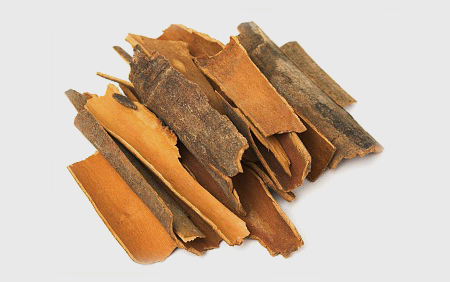Cinnamon tree was known to ancient physicians even before 2700 BC. The Chinese used the bark of this trtajagro Dalchini (cinnamon)ee as a medicine. The Romans also knew about the medicinal value of this bark. Eminent physicians like Galen, Dioscoredes and Sasaferes described various uses of cinnamon. Indians knew about the therapeutic uses of this herb before the 8th century. The oldest record available about the description of cinnamon is in the Torah, the Jewish religious text. It was. however, Khizvenee who was the first person to give details about the medicinal virtues of this herb in the 13th century.
Cinnamon is an evergreen tree which is small and bushy. Dried leaves of cinnamon, along with its dried inner bark are used all over the world as a spice or condiment. It has a pleasing fragrance and a warm, sweet and aromatic taste.
The bark of the tree is thick, smooth and light or dark brownish in colour. The inner bark is obtained from carefully selected shoots. It is then cured and dried. While drying, the bark shrinks and curls into a cylinder or quill.
It has been cultivated from ancient times. It appears to have reached Egypt and Europe by the fifth century BC. This tree occurs in South India upto altitudes of 500 metres but is more common at lower altitudes, even below 200 metres.
An analysis of cinnamon shows it to consist of moisture, protein, fat, fibre, carbohydrates and ash, besides calcium, phosphorus, iron, sodium, potassium, thiamine, riboflavin, niacin, vitamins C and A. Its calorific value is 355.
